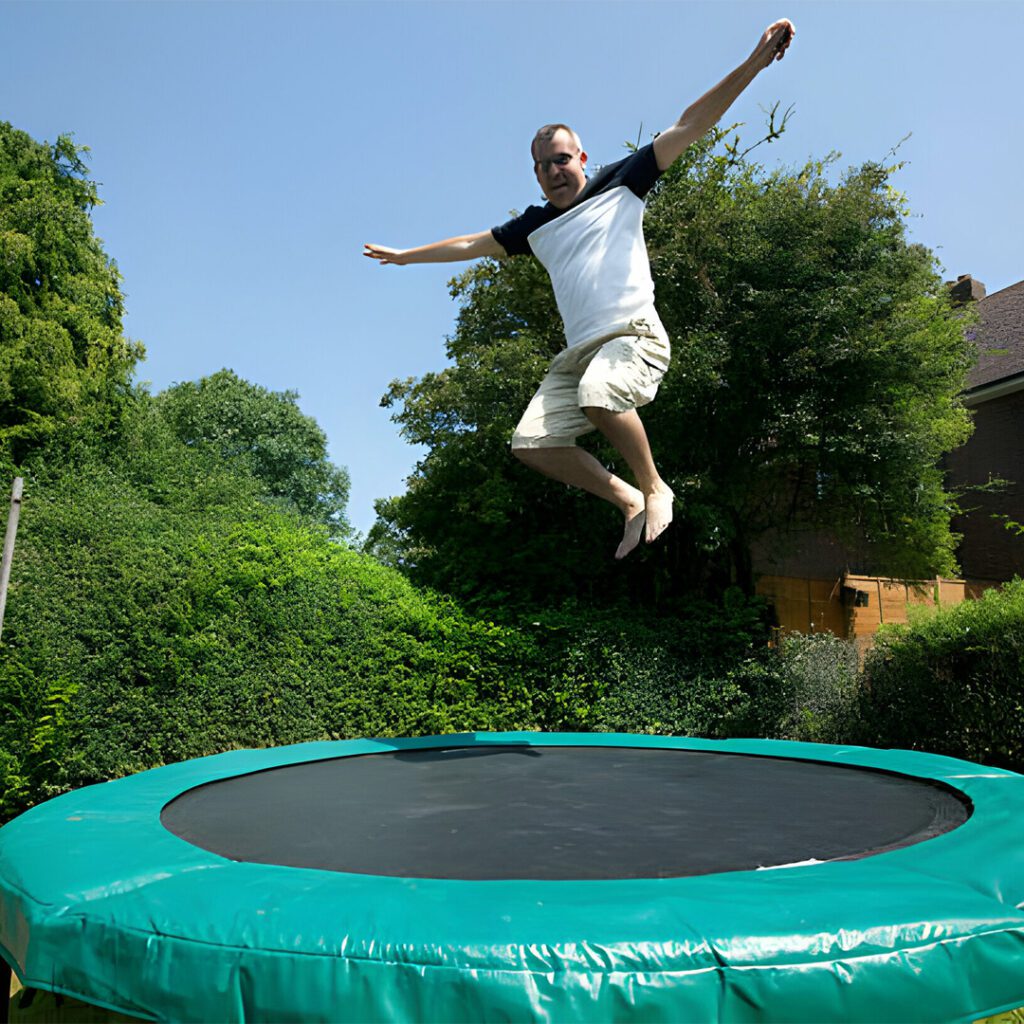
You’re drained, frustrated, and upset. Have toxic algorithms and fake influencers sucked you into a cycle of comparison, controversy and consumerism? Well, don’t delete that account just yet, my friend. There are things you can do, from playing with your pet at home to bouncing and enjoying on a trampoline, you can save yourself from the pitfalls of social media. Let’s talk about some ways to reclaim your digital wellbeing and make social media a little less toxic on your soul.
In this blog, we will talk about 6 ways to save yourself from the toxicity faced by social media.
1. Green Therapy

Immersing yourself in nature is one of the most effective ways to combat the anxiety and stress caused by social media. Scientists call this “green therapy,” and many studies show it works. When you spend time outside surrounded by plants, trees, sunlight and fresh air, your body and mind reap the benefits.
Take a Walk – Just 30 minutes walking in a natural setting can lower stress hormone levels and blood pressure. It boosts your mood and mental wellbeing. Find a nice spot to sit, breathe deeply and soak in the environment around you. Listen to the birds singing and feel the sun or breeze on your skin. Your worries will start to fade away.
Gardening – Gardening is a great form of exercise and exposure to nature. Caring for plants in your unique home garden has been shown to decrease symptoms of anxiety and depression. The act of nurturing life gives you a sense of purpose and helps take your mind off of things.
Forest Bathing – This means visiting a forest or natural area and engaging all your senses to connect with nature. Listen to the sounds around you and breathe in the fresh air. Studies show forest bathing, also known as Shinrin-Yoku, shower stress levels and improved mood and sleep.
2. Trampoline Therapy

Jumping on a large 14ft trampoline is not just for children – it can be an effective form of exercise for adults that provides both physical and mental health benefits. Rebounding on a trampoline, known as trampoline therapy, can help lift your mood and ease anxiety by releasing endorphins – the feel-good hormones. It’s an enjoyable way to get your body moving and mind reset.
Exercise and fresh air
Spending time outside in nature and exercising on a trampoline provides vitamin D and an escape from being cooped up inside staring at screens. Getting your blood pumping releases endorphins that act as natural mood boosters and stress relievers.
Low impact
Unlike jogging or other high-impact exercises, trampolining is easy on the joints. The trampoline absorbs up to 80% of the shock, so you can get an intense cardio workout without straining your body. This makes it ideal for people of all fitness levels, ages and physical abilities.
Improve balance and coordination
Bouncing on a trampoline helps strengthen your core and improve balance, flexibility and motor skills. This can boost confidence in daily activities and sports performance.
Digital detox
Make trampolining part of your routine to unplug from technology and social media. Leave your phone inside and focus on the feeling of your body moving, your breathing and the sounds around you. This mindfulness practice can help shift your mind from a state of anxiety, distraction or comparison to a state of presence and calm.
Trampoline therapy is an uplifting way to release pent up energy, ease anxiety and boost your mood. Adding a few trampoline sessions into your weekly routine can do wonders for both your physical and mental wellbeing. Make the time for some simple pleasures – get outside, move your body and reconnect with yourself.
3. Pet Therapy

Spending time with animals can do wonders for your mental health and wellbeing. Pet therapy, also known as animal-assisted therapy, involves interacting with pets to help improve mood and reduce stress. Whether you own a pet or volunteer at an animal shelter, here are some of the benefits:
Decreased feelings of loneliness and isolation
Bonding with pets can help combat loneliness and give you a sense of purpose. Playing with pets increases oxytocin, the “love hormone”, which makes you feel good and lifts your mood.
Reduced anxiety and stress
Interacting with pets can help calm feelings of anxiety and lower stress levels. Petting animals has been shown to decrease levels of the stress hormone cortisol while increasing endorphins, the “feel good” hormones.
Depression Killer
Playing with pets can release endorphins that improve your mood and act as natural antidepressants. Pet therapy is even used as an intervention for people struggling with depression and other mood disorders.
Whether you have your own furry companion at home or volunteer at an animal shelter, spending quality time with pets can do wonders for both your physical and mental health. Pet therapy is a simple way to boost your wellbeing and find more meaning in your day to day life.
4. Mindful Social Media Engagement

Social media should enrich our lives, not drain them. Practising mindfulness when engaging with your social platforms can help shift your experience from toxic to nourishing. Here are a few tips to make your time online more meaningful:
Set an intention
Before opening an app, pause to ask yourself why you’re logging in and what you aim to get out of the experience. Do you want to connect with friends, stay up to date on news, or simply distract yourself for a few minutes? Setting an intention will help guide your scrolling and make the most of your time.
Consciously scroll
It’s easy to mindlessly scroll through posts and stories on autopilot. Instead, be fully present with each item that pops up in your feed. Read captions and comments, linger on photos, and react thoughtfully by liking or commenting only on things that genuinely resonate with you. This focused approach will make your social media interactions feel more rewarding.
Recognize emotional triggers
Certain friends, influencers or hashtags may provoke feelings of envy, inadequacy or FOMO (fear of missing out). Make a mental note of accounts that frequently trigger negative emotions and consider muting, unfollowing or blocking them.
5. Art Therapy Workshops

One way to break free from the need for constant connection and online validation is through art therapy workshops. These workshops provide a creative outlet to express yourself, work through difficult emotions, and find meaning – all without social media.
Participating in art therapy workshops has numerous benefits. Some of the key advantages include:
- Reduced stress and anxiety – Art therapy uses creative expression to help reduce stress and anxiety. The act of creating art in a supportive environment can be very calming and help decrease symptoms of anxiety.
- Improved self-esteem – Art therapy workshops encourage you to explore your inner self through art. This can help you gain valuable insight into yourself, process difficult emotions, and improve your self-esteem.
- Social connection – While art therapy workshops aim to disconnect you from technology and social media, they do provide real social interaction and connection with others. You have the opportunity to bond with like-minded people in a meaningful way.
- Emotional release – Creating art gives you an outlet to express difficult emotions like anger, sadness or frustration in a healthy way. Art therapy workshops are designed to provide guidance on how to use art for emotional release and healing.
6. Outdoor Adventure Challenges

Getting outside and challenging yourself with some outdoor adventures is a great way to unplug from social media and reconnect with nature. Here are a few ways to push yourself and boost your mood without technology:
- Rock climbing – Scale an indoor climbing wall at a gym or head outside to climb natural rock faces. Climbing requires focus and problem-solving that helps clear your mind. Even just bouldering a few routes can help you disconnect.
- Kayaking – Paddle through lakes, rivers or the ocean in a kayak. The rhythmic paddling provides exercise and the opportunity to spot wildlife in their natural habitat. Rent gear to get started or join a local kayaking group.
- Hiking – Lace up your boots and hit some local hiking trails. Start with easy nature walks and build your way up to more challenging hikes as you get into better shape. spot scenic vistas and experience the peace of the wilderness. Getting your heart pumping while surrounded by nature is a perfect remedy for too much screen time.
- Cycling – Ride a bike along bike-friendly roads or trails in your area. Cycling gives you a chance to explore at a slower pace than driving while providing exercise. Rent bikes to get started or join a casual cycling club.
- Camping – Pitch a tent under the stars for a night or two. Sit around a campfire, gaze at the stars, go on night hikes and enjoy simple pleasures like cooking over an open fire. Limit technology used to avoid checking social media and enjoy quality time with friends or family.
Conclusion
So there you have it – six simple yet effective ways to help save yourself from the toxic elements of social media. By being more mindful of your usage, diversifying your feeds, taking regular breaks, disabling notifications, avoiding arguments, and even using time-limiting apps, you can dramatically improve your overall experience. And who knows – you might even find you enjoy social media again when you’ve created some boundaries! Ultimately though, the choice is yours. Listen to yourself – if any platform ever leaves you feeling drained, anxious or depressed, don’t be afraid to step back. Your mental health matters more than any number of followers.






